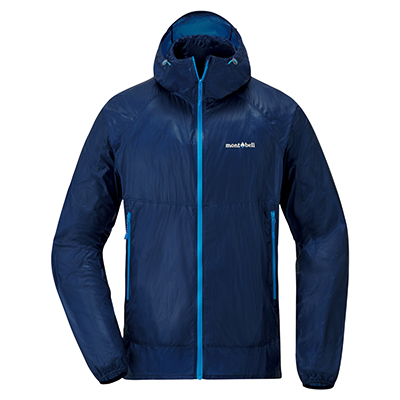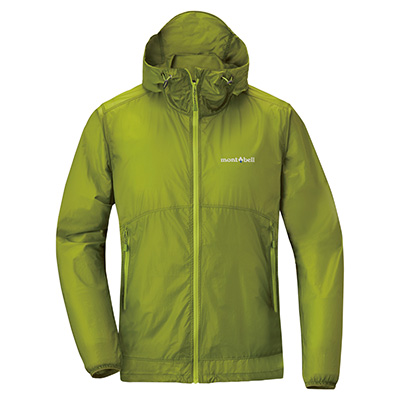D
Deleted member 16014
Guest
TL;DR, windshirts are great for what they're for.What type of wind shirt are you using? I see one from Enlightened Equipment that looks slick. Comes in 3 different Denier Nylon. Looking at the 20D. Might be a little shiny for hunting though depending on the color.
The reason the EE windshirts, and some others like them, are shiny is that they're calendared. It's a process of heat rolling that makes a fabric downproof, and as a side effect less permeable to wind. The reason you see extremely light fabrics heavily calendared is that they'll leak down or other insulations if they're not. The weave is just too thin by design.
The tradeoff for a functionally impermeable wind shirt is that it will not breath well. CFM is the most common measure of air permeability in non-memrane materials. You'll occasionally see it in wind resistant membranes like Windstopper or Infinum. <1 CFM is generally considered windproof. Unless the wind is really screaming, anything under about 5 feels pretty windproof in practice. Tradional light fleece layers would be roughly 200 CFM -- you could breathe through it easily, without noticing much if any resistance.
In the case of the EE windshirts, the thinnest deniers are so thin that even though they're calendered, they have higher CFM numbers. Their 20d is 1 CFM, 10d is 10 CFM, 7d is 35CFM.
I feel that between about 20-50 CFM is a good sweet spot to operate in. Something like the BD Alpine Start is in the 60's, and is almost a bit too air permeable for what I want to use it for. It's great for some conditions, like wind/sun protection in warmer weather, windy alpine ridge type stuff. The Patagonia Houdini Air comes in around 20 CFM, and is a great piece. What I like about the ME Aerofoil specifically is it's about the right balance of protection and breathability IMO (CFM = 38), good DWR, 4 oz, has some mechanical stretch due to weave (not elastane or similar, will cover below), and has a burly zipper. The zip is usually the first thing to go on ultralight pieces.
Windshirts reach around and touch softshells at about the 8-10oz mark. The BD Alpine Start basically; other slightly heavier examples would be the Rab Borealis and OR Ferrosi. When you get into the range where most people start referring to them as "softshells" the main difference is the addition of an elastic (@ 7-15%) and heavier, usually double weave fabrics. Instead of 30-60 g/m2, fabrics are more like 180-250 g/m2. The stretch is nice for comfort, and the thickness is nice for durability. The obvious tradeoff is weight, but dry time is just as important. Anything with a substantive % of stretchy material will collect and hold moisture longer. That's why I like the ME Aerofoil so much...it's 100% nylon, but has some slight stretch because of the way it's physically woven, not because of an elastane component. Bets are off for pants, they just take so much abuse that the mid weight stretch-woven materials make a lot of sense.
Some of my favorite wind shirts: Pagaonia Houdini Air, MH Kor Airshell, Mountain Equipment Aerofoil
Some of my favorite slightly stretchier, light softshells: Rab Borealis, Outdoor Research Ferrosi, Mountain Equipment Echo, Black Diamond Alpine Start
I like my puffy layers of all weights and my heavier rain layers to be essentially wind-impermeable. I like my action layers to be balanced so that I'm less wet when I get to the top of the mountain, and when I do get wet they can dry in 20 minutes of sun, or worst case at least stand a chance of drying out overnight via body heat.
Thanks for reading this useless thesis on windshirts that you only sorta asked for. Donations can be sent to Windshirt Gospel Ministries Yurt Village and Gringo Taqueria.






